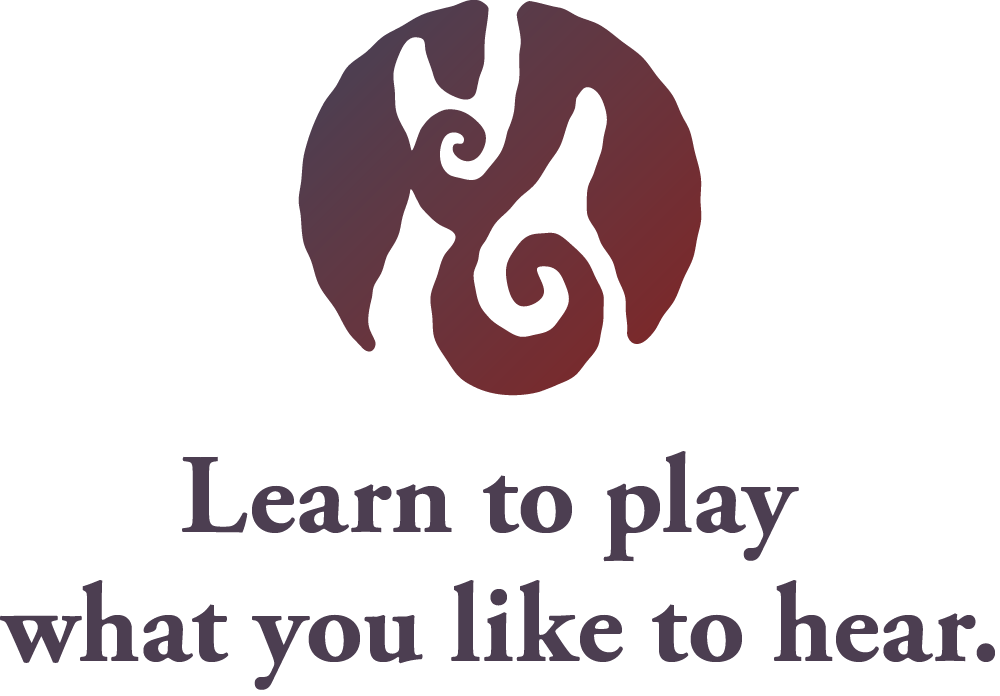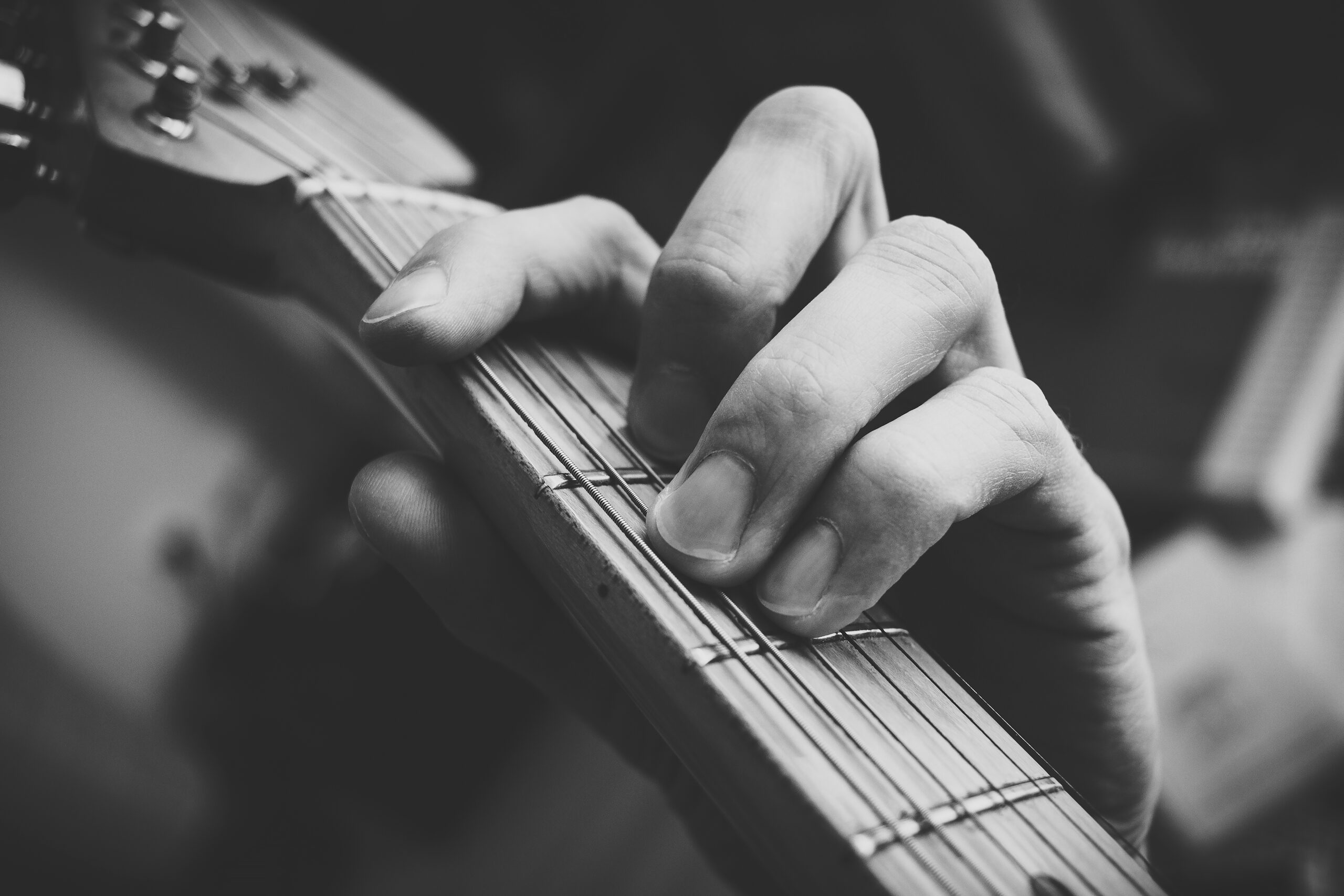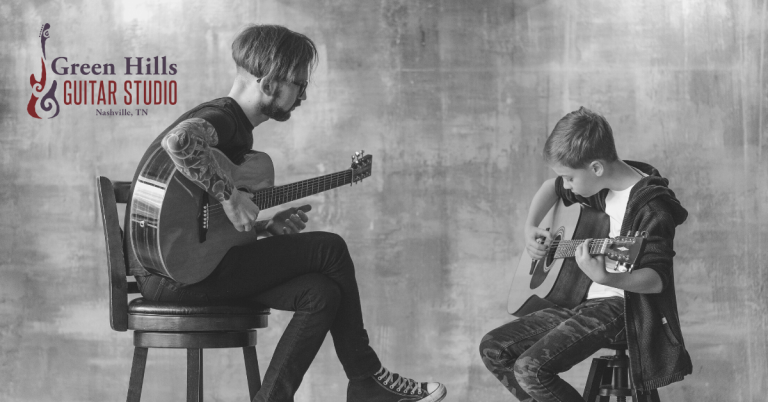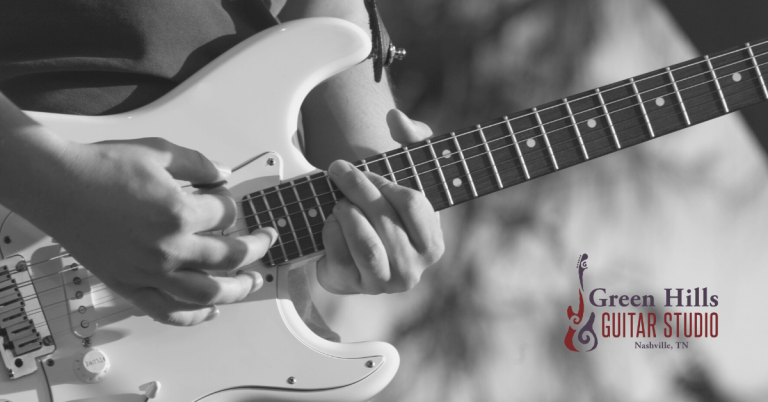How To Play Barre Chords: The Half Barre, Part 1
There’s no doubt about it—learning how to play barre chords is a big leap from open positions chords. Usually, people jump right into barre chords without being aware of the hand position adjustments they need to make to play them successfully.
Barre Chords Can Be a Struggle to Play
Like every other guitar student, I struggled to learn barre chords. My entire first year of learning guitar was spent on an acoustic guitar. The strings were too thick and the action too high, but I struggled through it. It was incredibly frustrating. Fortunately, I was interested in bands that used power chords…and lots of them!
Well, those were also difficult, but I started thinking a bit outside the box. I noticed where my hands hurt because I knew my calluses were solid. This led me to explore the back of the guitar neck, trying different positions with thumb placement, paying attention to what my palm was doing, and examining why certain strings were buzzing consistently. I started to realize and correct some important issues.
These findings were confirmed when I began playing barre chords and learning songs much easier, faster, more consistently, and with much less strain and fatigue in my hand, wrist, and forearm. I studied classical guitar in college, and this confirmed my technical findings! Now, that thumb-over-the-top Jimi Hendrix/John Mayer approach is another discussion. We’ll get to that later…
Introducing the Half Barre Chord
What if I showed you how to work up to playing full barre chords? This approach allows you to:
What is a Half Barre Chord?
A half barre chord on guitar is a chord where only some strings are fretted using a barre technique. In a traditional barre chord, you use your index finger to press down all the strings on a particular fret, creating a barre. However, in a half barre chord, you only press down some of the strings with your index finger, and the other strings are fretted using your other fingers.
For example, a common half barre chord is the Bm chord. To play this chord, you would use your index finger to barre the second fret of the A, D, and G strings and then use your ring finger and pinky finger to fret the fourth fret of the D and G strings, respectively. You would leave the high E and low E strings open since they are not part of the chord. This creates a B minor chord shape without having to barre all six strings with your index finger.
Learning How to Play Half Barre Chords
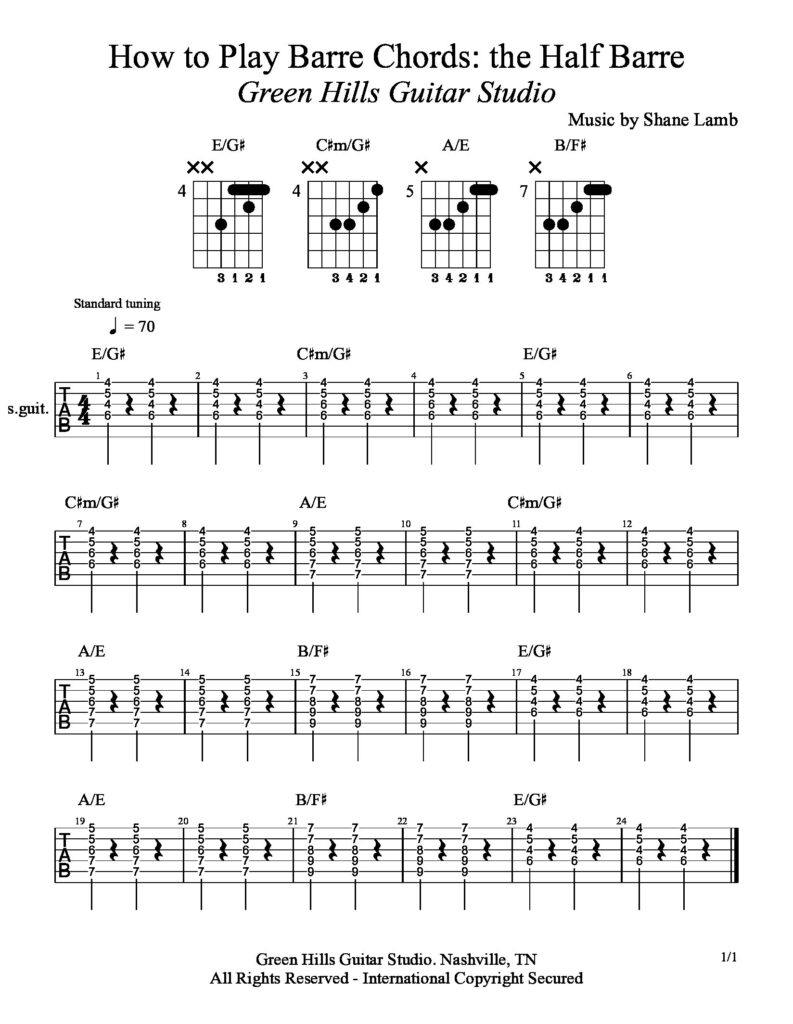
Half Barre Chords, pt 1. (Key of E)
The Takeaway
Half barre chords are a valuable tool in any guitarist’s arsenal, providing versatility and ease of playability. If you’re struggling with barre chords, try half barre chords and see how they can enhance your playing. At Green Hills Guitar Studio, we offer expert instruction and guidance on all aspects of guitar playing, including chord shapes and techniques.
Contact us today to schedule a lesson and take your playing to the next level! If you want more insights into hand position, check out these two posts:
You can also check out more free guitar lessons on our YouTube channel.
